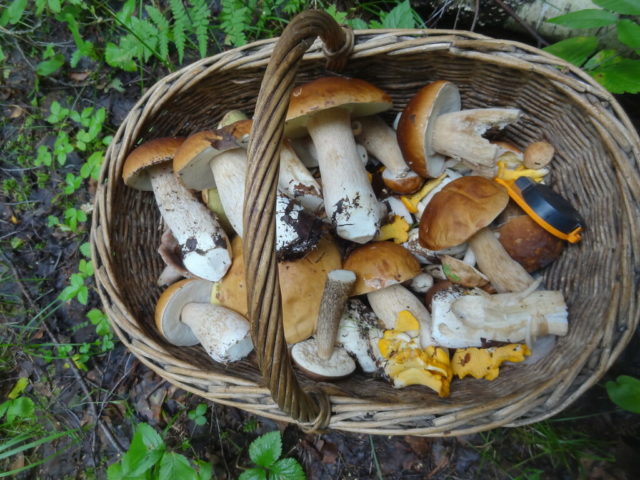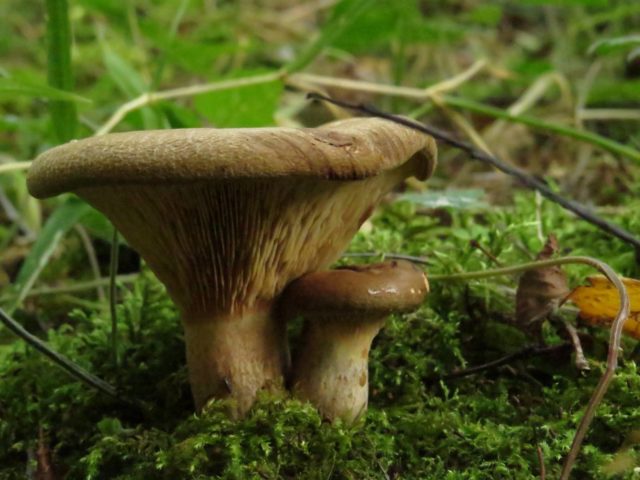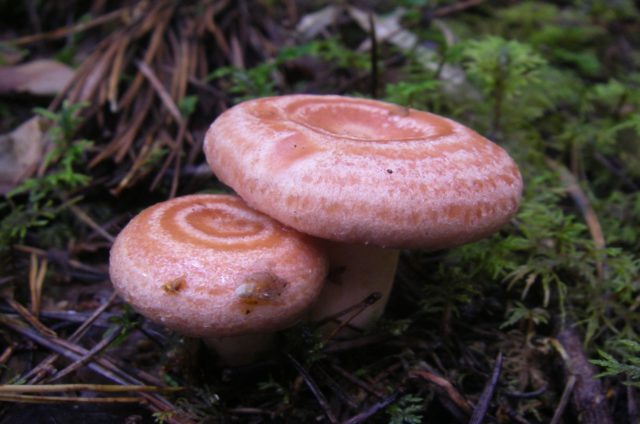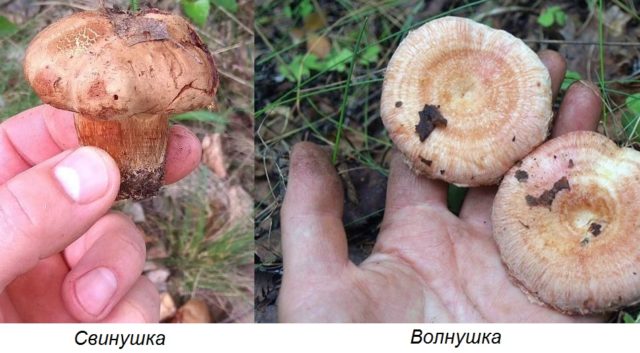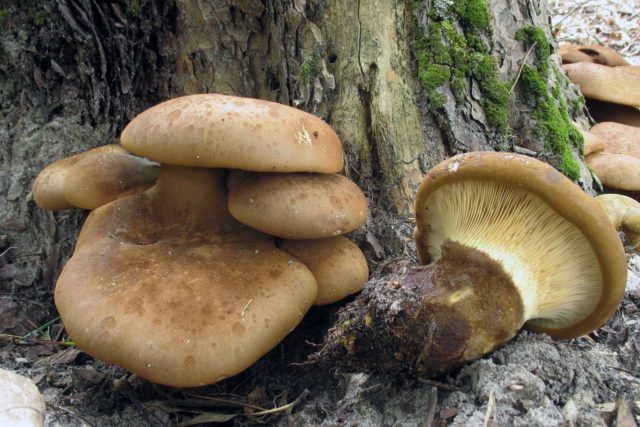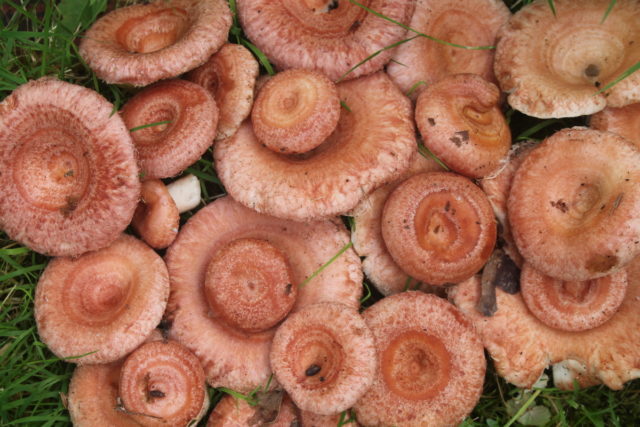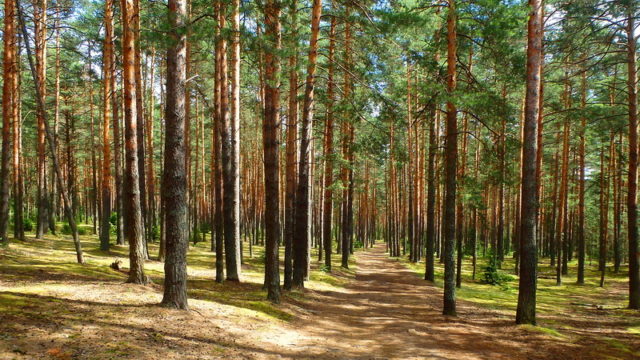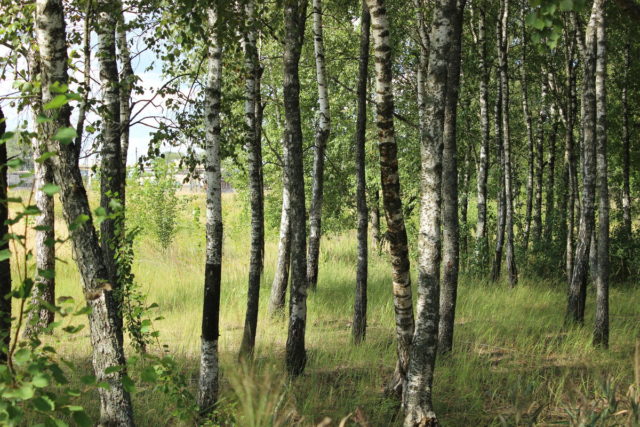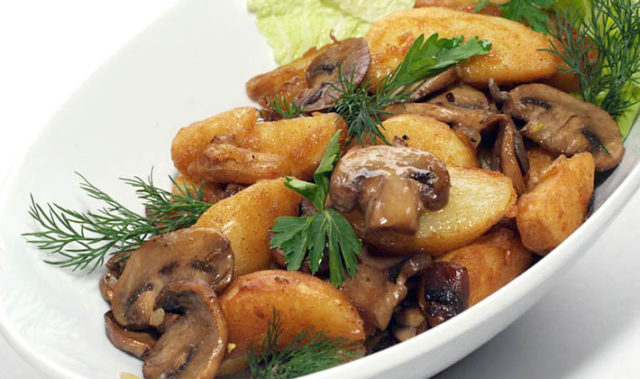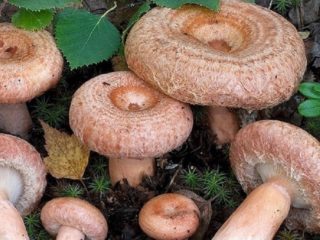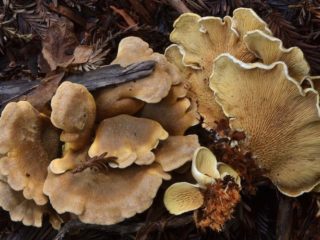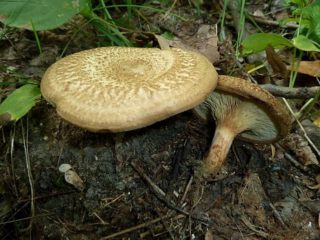Content
With the onset of the mushroom season, the question of whether different varieties of mushrooms belong to edible species becomes in demand. The variety of the mushroom world can sometimes play a cruel joke with mushrooms: some of them are outwardly similar to each other. The mushrooms and the pigs are of the lamellar type. This means that their caps are covered with small accordion plates from the inside, the differences between these mushrooms are not immediately noticeable.
Description of mushrooms and pigs
The fat pig has the second name "black pig". It belongs to the category of rare lamellar mushrooms, by type it is considered conditionally edible. External description:
- Hat. Reaches 30 cm in diameter, can develop with a curved, unfolded edge. It has a smooth, dry surface. The shade of the cap varies from reddish brown to light chestnut. The plates inside it are thin, frequent, easily separable from the pulp.
- Leg. Thick, black near the surface of the earth, up to 10 cm long, up to 5 cm thick. Under the cap it has a whitish-yellow tint.
Pigs bear fruit from August to November. It is important to distinguish between thick and thin varieties. If the first category of mushrooms has the characteristics of conditionally edible, then the second is considered poisonous.
Wolves belong to the russula family.
They are also called "roe deer", "volzhanka", "volnyanka", "rubella". Distinguishing them from pigs is pretty easy. Description of the wave:
- Hat. It can grow up to 12 cm in diameter. Young waves have a convex cap; over time, it settles, forming a small depression in the center, its edges tucked down. A pattern is unclear on the skin. The color of the cap can vary from light pink to pure white. The pulp remains snow-white, strong; when cut, it releases milky juice.
- Leg. It stretches up to 6 cm with a small diameter of 2 cm. It is similar in color to the shade of the cap, small grooves and puffs can be located on the surface.
How to distinguish a pig from a pig
Both varieties belong to the third category according to the description of the edibility of mushrooms. The differences relate to the appearance, as well as the timing of ripening. Pigs bear fruit from August to November. The difference between waves is that they grow from August to mid-September. Pink species begin to ripen in the second half of July. The most massive period for their collection is the second half of August.
It is very easy to distinguish pigs and volnushki even in the photo, which mushroom pickers share after collecting.
In appearance
The differences in the appearance of the little ones and the pigs are undeniable. Especially noticeable on adult specimens. The pigs are stretching upward with their hats. At waves, the edges always remain slightly lowered down.
Differences also concern the color of the caps: thick pigs can acquire shades of brown and yellow.
Unlike them, the waves are white or pink.
By composition and calorie content
Mycologists do not recommend eating raw edible mushrooms. In order to start preparing basic dishes, both varieties must be boiled: in this they do not differ.
Most of the composition of both species is vegetable protein. Boiled pig contains 30 kcal. The difference between the waves lies in the lower caloric value: in 100 g of the product - only 22 kcal. Both varieties contain amino acids.
By useful properties
Volnushki have an antibacterial effect, help the body recover after physical exertion, and also help to strengthen the immune system. Pigs are characterized by anti-inflammatory properties, and, in addition, they help to increase the strength of the musculoskeletal system.
By taste
Both types of mushrooms need extra soaking before cooking. This is due to the fact that the milky juice that the fruit bodies secrete has bitterness. After soaking and boiling, the pigs may taste like chanterelles, and the little ones - mushrooms.
By habitat
It is possible to accurately distinguish mushrooms from each other by the place of growth. Pigs prefer pine forests, grow on the roots of coniferous trees and young stumps.
They can be found on the shores of swampy lakes. Wavelets like sunny forest glades with a predominance of birches. In birch forests, they grow in whole colonies. Sometimes found in mixed forests, where they keep close to mushrooms and deciduous trees.
The use of pugs and pigs in cooking
To completely eliminate the possible harm when eating mushrooms, mycologists recommend a long soaking process. At this stage, the varieties reveal an additional difference: the pigs are soaked for three days, for the little ones this procedure lasts 15 - 20 hours.
After soaking, the remaining water is drained off. After that, both varieties are boiled in clean water for 15 - 20 minutes. These mushrooms are not used for drying or drying. They are suitable for salting, pickling, making mushroom pasta. Both types go well with vegetables, are suitable for frying, can be used as a side dish or as a main dish.
Volnushki are used to make delicious soups. The recipe for roast pork and pork is known for restaurant serving. The pigs make delicious mushroom caviar, which can be prepared for the winter.
Conclusion
Volvushka and pig mushrooms can be tasty and healthy. They have characteristic differences, but are similar in the general cooking technology. After collection, they must be soaked in order to exclude the deposition of toxic substances and eliminate bitterness. Additional cooking for 20 minutes makes them completely safe. Considering that mycologists began to classify both varieties in the third group, which denotes conditional edibility, one should be especially careful when collecting and further cooking mushrooms.
